wp_admin_cli
I practice Muso Jikiden Eishin Ryu Iaido (無双直伝英信流居合道) and am a member of MJER Seitokai (正統会, orthodox association) of Japan.
On Saturday, May 15, all members of the dojo came together to hold a regional shōdan shiken for both Clear Lake and the San Antonio dojo. We were honored to have John Ray Sensei come down again to lead the judging panel, and for Jon Andresen Sensei’s support. Also we were privileged to have the support of Michael Goodman’s spouse, Melissa, assist us as the Candidate Organizer (CA) for the bow-out area. Even those who were not testing played key roles,– Laurence Ching was the CA for the bow-in area and managed the number tags; Sean O’Hara was the Ceremony Master (CM) for the opening ceremony, testing (1-4dan), and closing ceremony.
Before the test Ray Sensei lead us through a short practice of the Battō Hō set, pointing out and reiterating kihon as he went. Then there was a brief rehearsal of the process for the benefit of the two students from the San Antonio/Austin dojo who were new to the Clear Lake dojo and our testing process. Next the written tests were administered and graded. Finally we were ready to begin the main part. The opening/closing ceremonies and everyone’s practical tests went very smoothly, thanks to the weekly rehearsals. During closing remarks Ray Sensei announced that he would recommend all for the rank they tested for. Below is a listing of who tested for what. After the group photo (see below) was taken and break down complete, everyone walked to the nearby Italian restaurant for a long relaxed meal with much fellowship.
Note: In addition to the expected shodan through yondan tests there was a surprise (surprise to everyone except for Ray Sensei and myself) hachidan test. Michael Goodman was the CM for that segment.
Testing for shodan: Jonathan MacDonald (CL), Collin Rogers (SA/A), Billy Tran (CL).
Testing for sandan: Michael Goodman (CL), Eric Simon (SA/A)
Testing for yondan: Troy Beckman (CL)
Testing for hachidan: Emily Egan (CL)
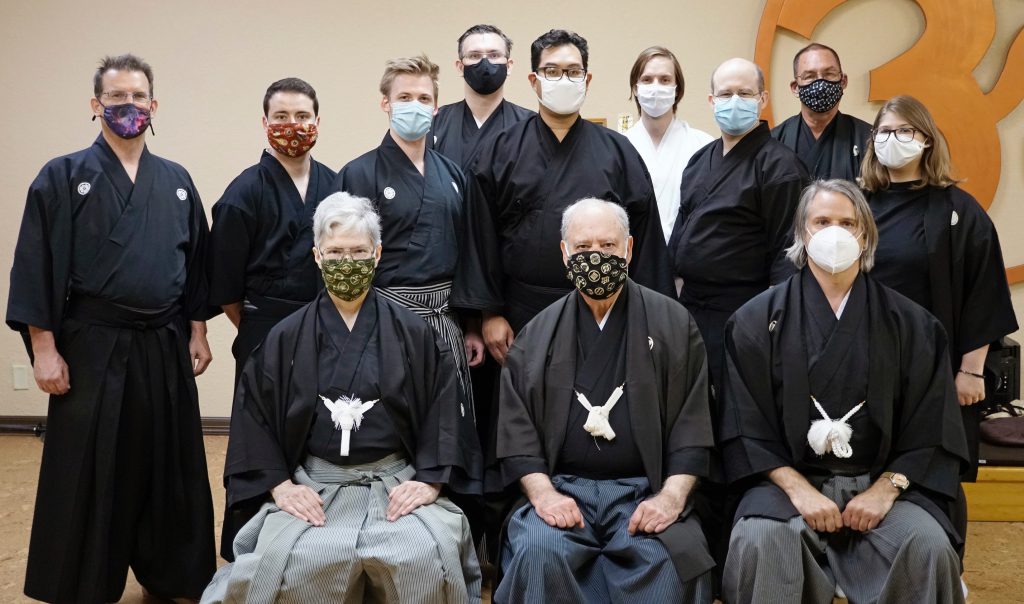
Saturday, May 11, was our first demonstration at the Friendswood Public Library, held as part of their observance of Asian/Pacific Islander American Heritage Month (May). It was held inside their meeting room just inside the front door.
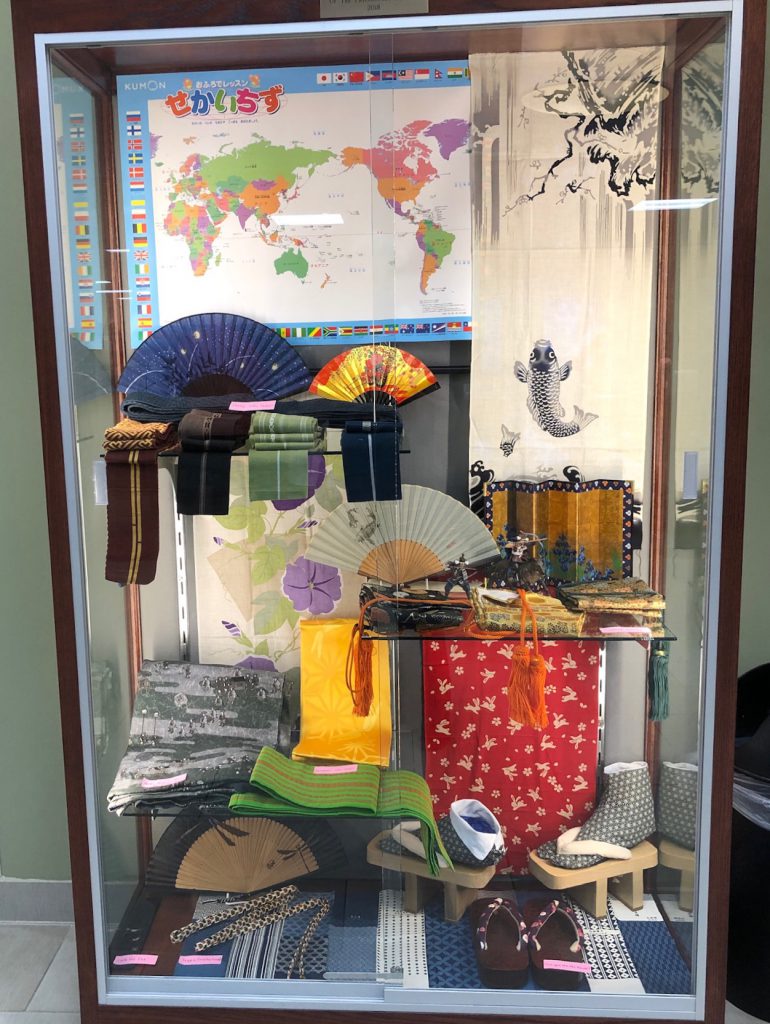
Earlier in the month I was invited to fill their display case. This case is in the lobby next to the meeting room door and the display will be up until some time at the end of the month. Also in the lobby I discovered a display of MA related books in the lobby that library staff were kind enough to put up together with an event flyer that Mr Riley created to publicize our demo.
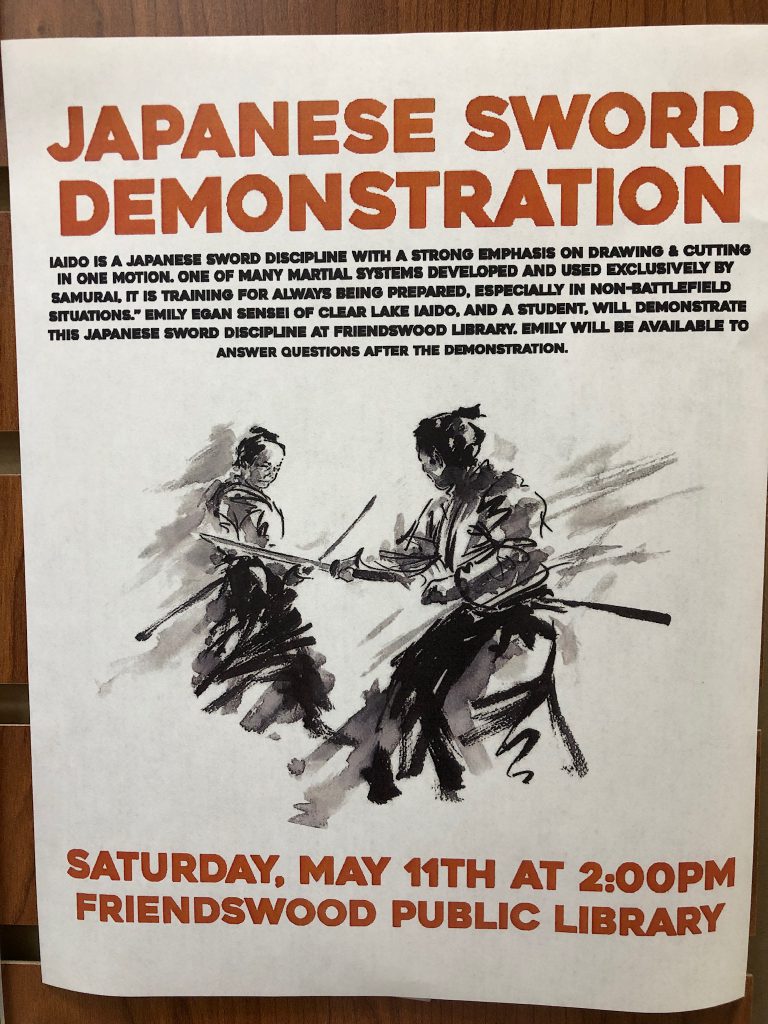
The ceiling of the room was a bit low, which caused some on the demo team to change waza or change how they did standing kirioroshi in order to not hit the ceiling. This is actually one of the side benefits of doing demos outside one’s dojo,- it forces flexibility and awareness of one’s surroundings. I was joined by Michael Goodman, Billy Tran and Jonathan MacDonald. In addition to demonstrating waza and Tachi Uchi No Kurai, I took a lot of questions from the audience on a wide range of topics ranging from how I got into Iai, to the why and wherefores of the formal seated bow, to the purpose of sageo, and more. It was a good crowd.
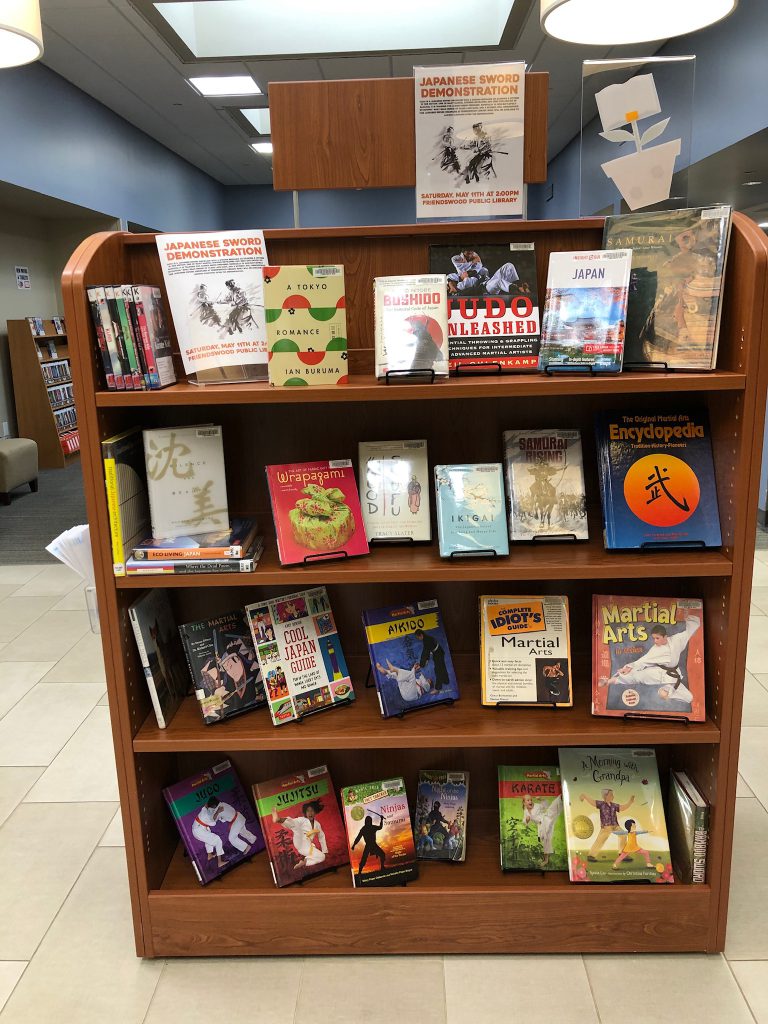
Last night after the Sunday practice we sampled two varieties of shincha (the first green tea harvest of the year) as well as some Japanese sweets. A tatami mat was spread out on the dojo floor and we gathered around it. Present were Jon A. sensei, Brad, Billy, and myself.
Brad had provided one of the teas, a Farmer’s shincha which is minimally processed. It has the appearance (before brewing) of grass clippings and a nice fresh scent. More information about this tea is here:
https://www.hibiki-an.com/product_info.php/products_id/429
The other tea was a shincha maccha (aka matcha), which I supplied, which was finely ground and had a deep green color. More info:
https://www.hibiki-an.com/product_info.php/products_id/864
In the sweets department, Billy had brought melon bread to share and I had brought mini dorayaki, daifuku and ohigashi. The melon bread, dorayaki and daifuku were bought at either Daido or Seiwa (Houston area Japanese grocery stores). Japanese green tea is typically not sweetened, but rather a sweet is eaten first before sipping the tea. More information on ohigashi (ordered from Hibiki-An) here:
https://www.hibiki-an.com/product_info.php/products_id/759
The water boiler I brought boiled the fresh water then kept it at the correct temperature while we practiced so we could get right to the brewing. Green tea requires a lower temperature than black/fermented tea for the best taste.
The tea making process was explained during execution for each tea, including the special maccha tools (chasen, chashaku, chasen holder). Everyone was able to enjoy some first-rate tea, the snacks, and each other’s company while expanding their Japanese cultural horizons a little bit. Thank you to everyone who could come.
Here at Clear Lake Iaido I think students should learn more than just how to swing the sword. Without some knowledge of the history and culture that produced MJER Iai, students’ understanding will be limited. Therefore discussing and reading (or listening to audiobooks & podcasts) about history and culture, or cultivating an interest in other aspects of traditional Japanese culture (cuisine, religion, clothing, etc) is encouraged. And occasionally we have tea parties.
If you haven’t yet been to the Evelyn Meador Public Library in Seabrook, Texas, to see the Japanese cultural display in their display case, you have until Wednesday next week (May 30) to do so. The next day the items on display will be removed.
The dojo brochure has been updated with mainly new photos and some better written content. It replaced the older version at the link at the bottom of the home page. Also here:
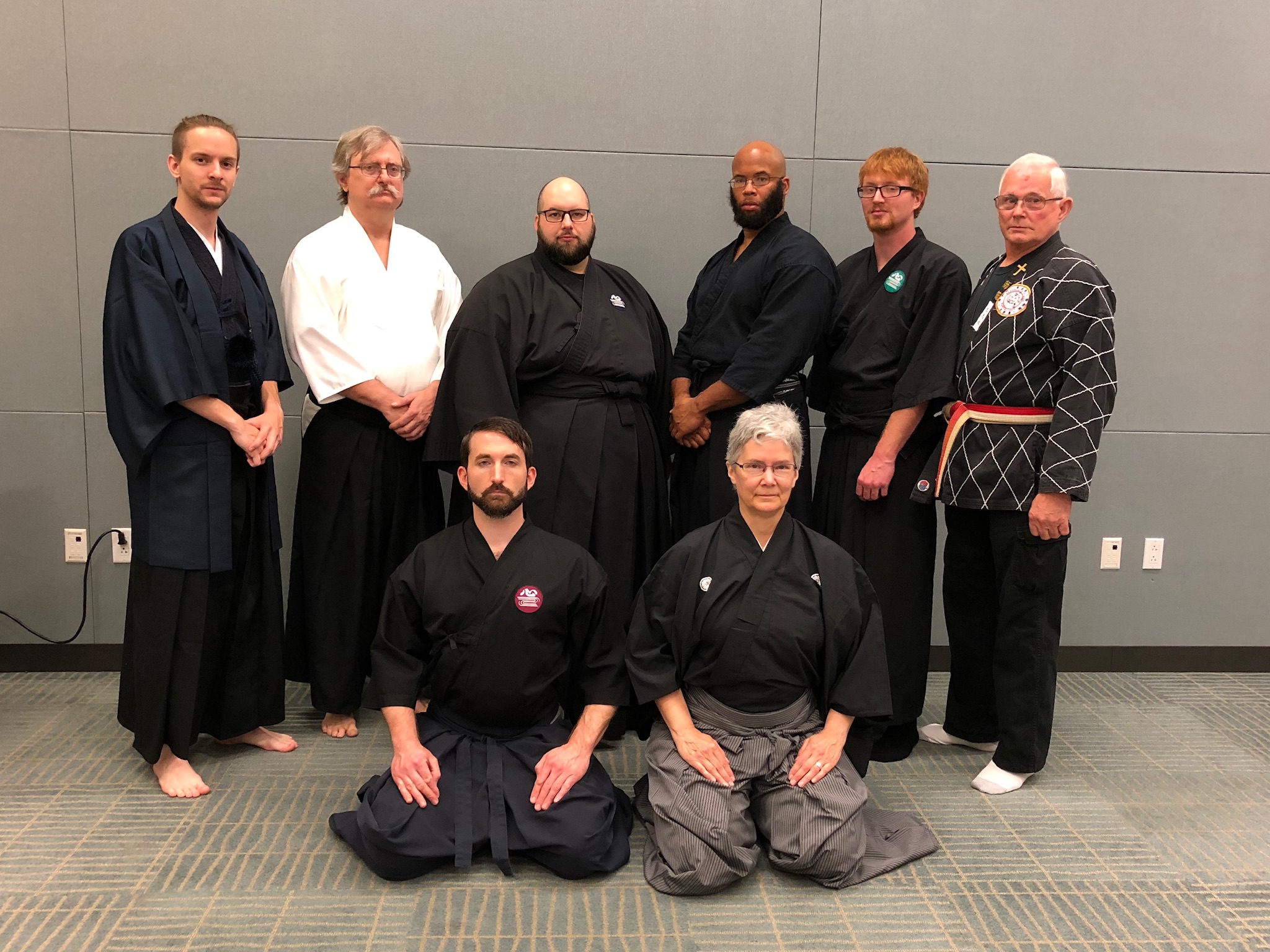
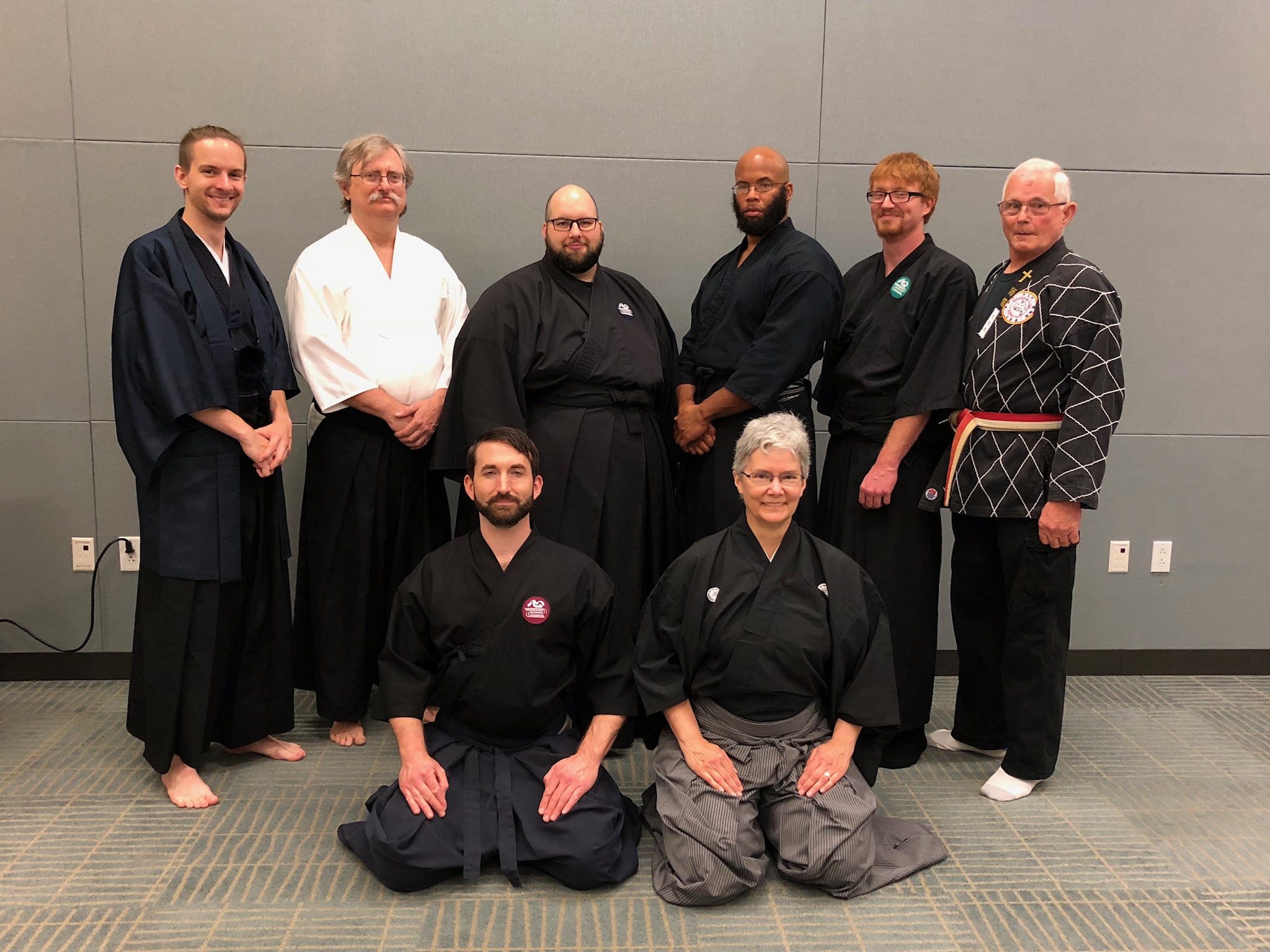 The joint embu/public presentation by Clear Lake Iaido Dojo and Tora no Tsume Dojo was a great success. Everyone brought a lot of energy into their demonstration, and the audience had some good questions. One question regarding the use of the sageo lead down some interesting avenues that high-lighted both functional and symbolic roles.
The joint embu/public presentation by Clear Lake Iaido Dojo and Tora no Tsume Dojo was a great success. Everyone brought a lot of energy into their demonstration, and the audience had some good questions. One question regarding the use of the sageo lead down some interesting avenues that high-lighted both functional and symbolic roles.
Today a new, joint display went up in Seabrook’s Evelyn Meador Public Library that showcases aspects of Japanese history and traditional material culture. The display represents the joint efforts of Ash Wellborn-sensei, from the local Shin Shin Ryū dojo, and myself. The display will be up for about a month. Next Saturday, May 5, there will be a joint embu given by us and the Shin Shin Ryū dojo at the library, starting at 11 AM in the meeting room. It is open to the public. This is an excellent opportunity to see two different sword styles and to ask questions.
Photos of the display case can be seen at this Flickr link:
The library address is:
2400 North Meyer Avenue
Seabrook, TX 77586
Many many thanks to everyone, both students and those who support them, who made the demonstration on Saturday and Sunday at Houston Japan Festival possible. It would not have happened as well as it did without everyone’s help. There is a photo attached to this post of everyone who demonstrated.
The weather was phenomenal this year. For those who have never been to Houston Japan Festival, this is a purely outdoor event held annually next to the Japanese Garden in Hermann Park in downtown Houston, so the weather plays a pivotal role. Usually Japan Festival is a sweat fest. This was the first year ever that I did not break a sweat during the entire event, even during the demonstrations. It was actually cold in the morning when we demonstrated, making the warmth of a winter weight haori and wool hakama feel very cosy.
There were more than a few vendors selling vintage Japanese clothing. The large booth that debuted last year was back selling lots of kimono and yukata. This event has become a great place to look for obi, koshihimo, juban, kimono, yukata and haori.
The JAXA booth was displaying a poster of Nemo since he’s currently on ISS until June. I tried to get an extra copy of the print, but no joy. So I took a photo which is attached.
The Japanese Garden in Hermann Park was recently enlarged so I strolled through it, enjoying the relatively quiet and spacious grounds. I highly recommend it when the hustle and bustle of the rest of the festival starts to wear at one. If interested in lotuses, there’s a variety grown there that is descended from very old seeds (~2000 years according to the sign) discovered at an archaeological dig in Chiba Prefecture. 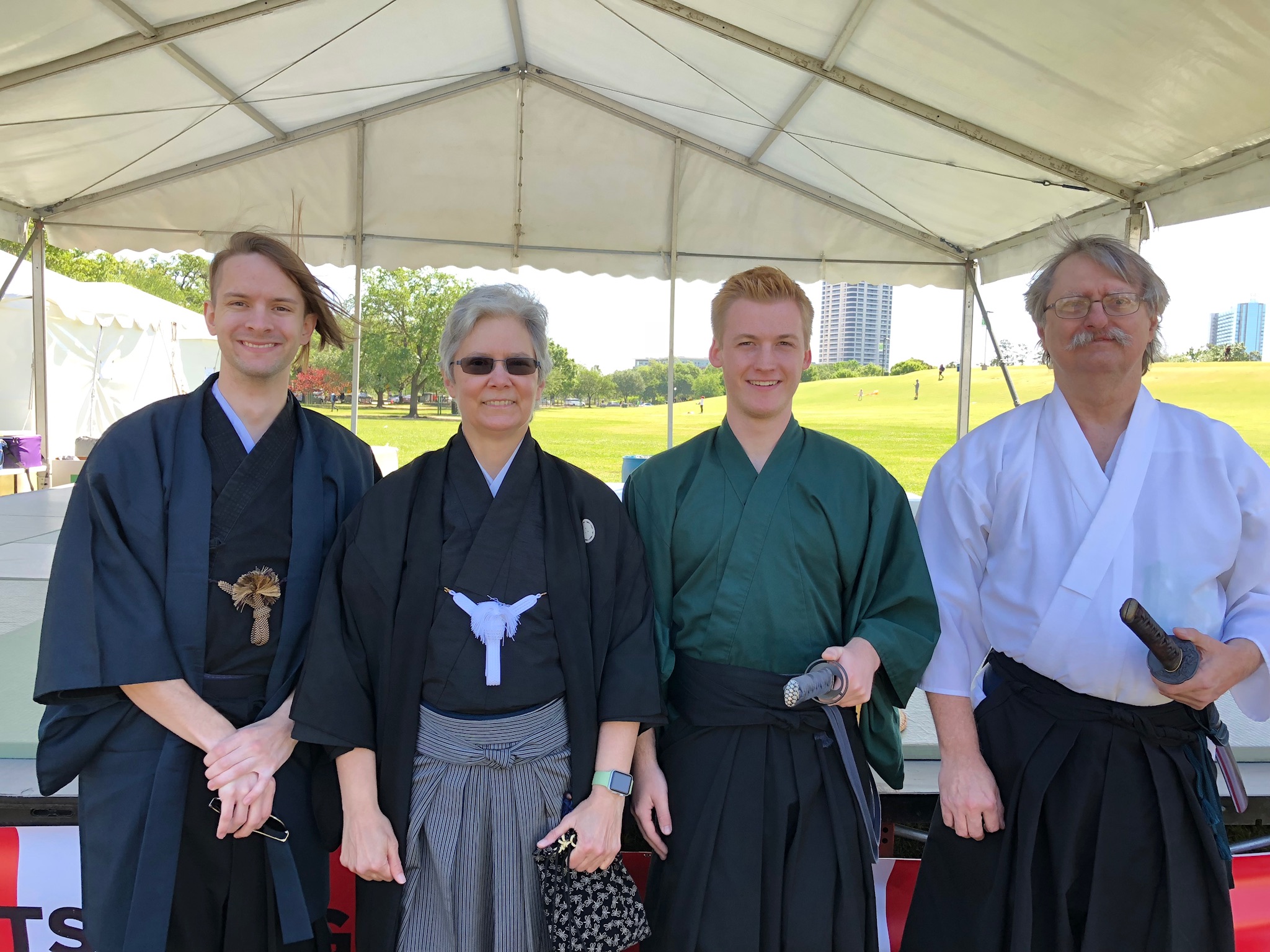
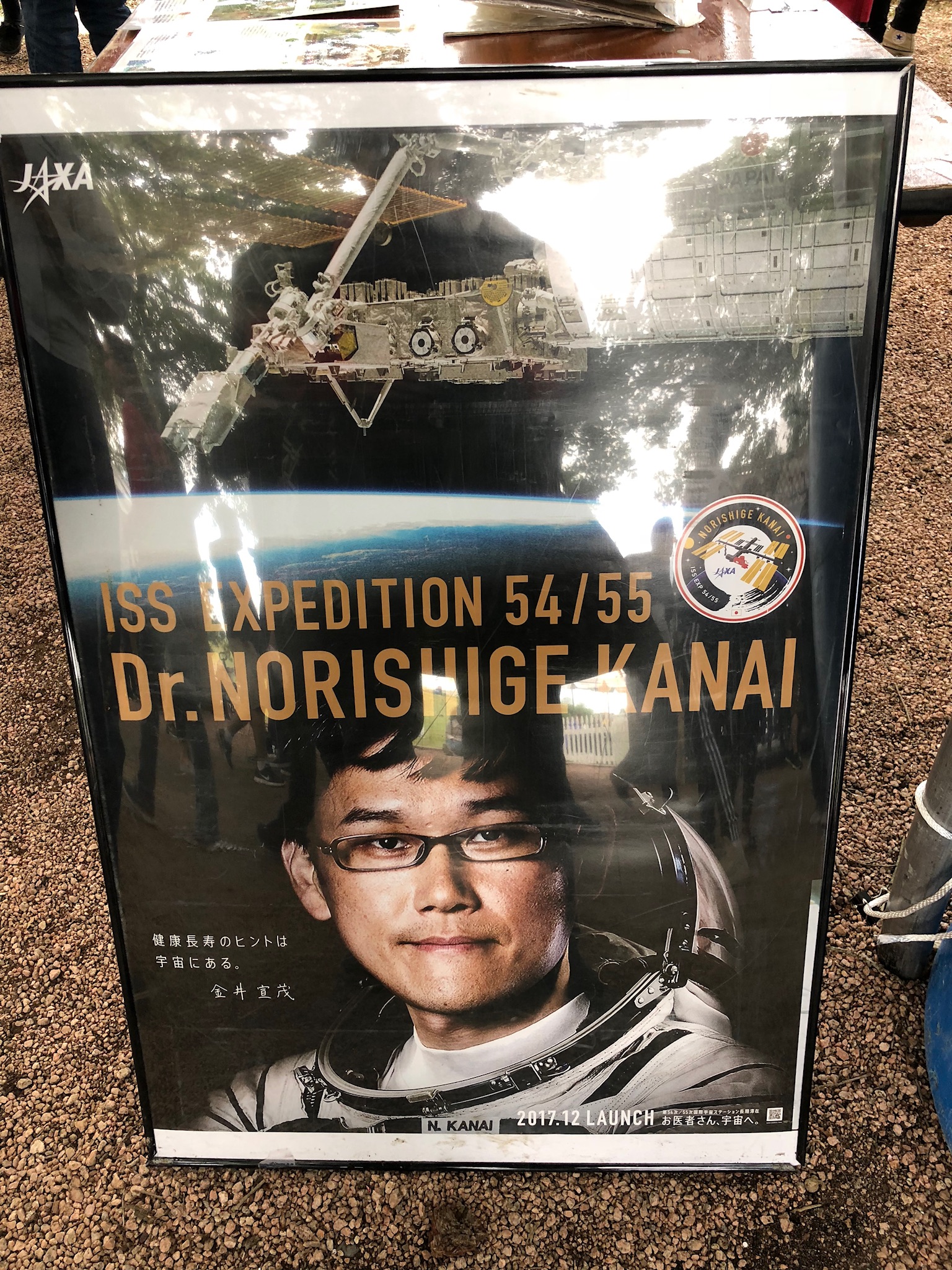
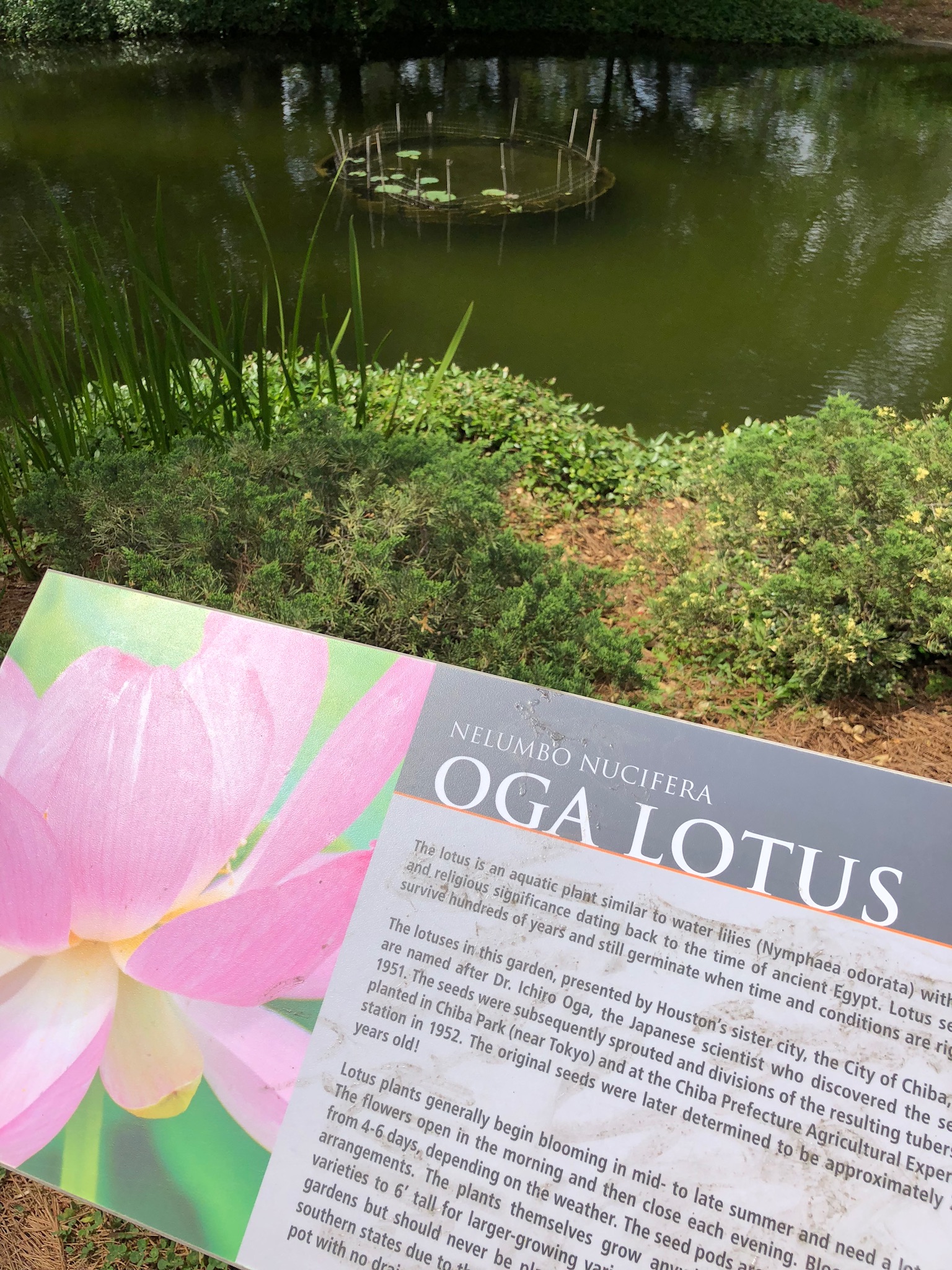
On the 2018 February 9-11 weekend John Ray-Sensei came down from Denton to the Clear Lake dojo to conduct training for the southern Beikoku Tendai Iaido Kai (BTIK) branch dojo. Attending from the Baton Rouge dojo was Neil Melancon-Sensei. Jon Andresen-Sensei represented the San Antonio dojo. In the course of the weekend we practiced Seiza, Battō Hō, Tōhō, Tatehiza, Oku Tachi, Kaewaza, and Tachi Uchi No Kurai. Everyone worked hard and came away with fresh insight. Even after years (20+) of practice there is still so much more to learn. This is what makes MJER Iaido so rewarding for the effort put in.
Also, in addition to the waza practice, Jon Andresen-Sensei brought some of his tantō for a show and tell. 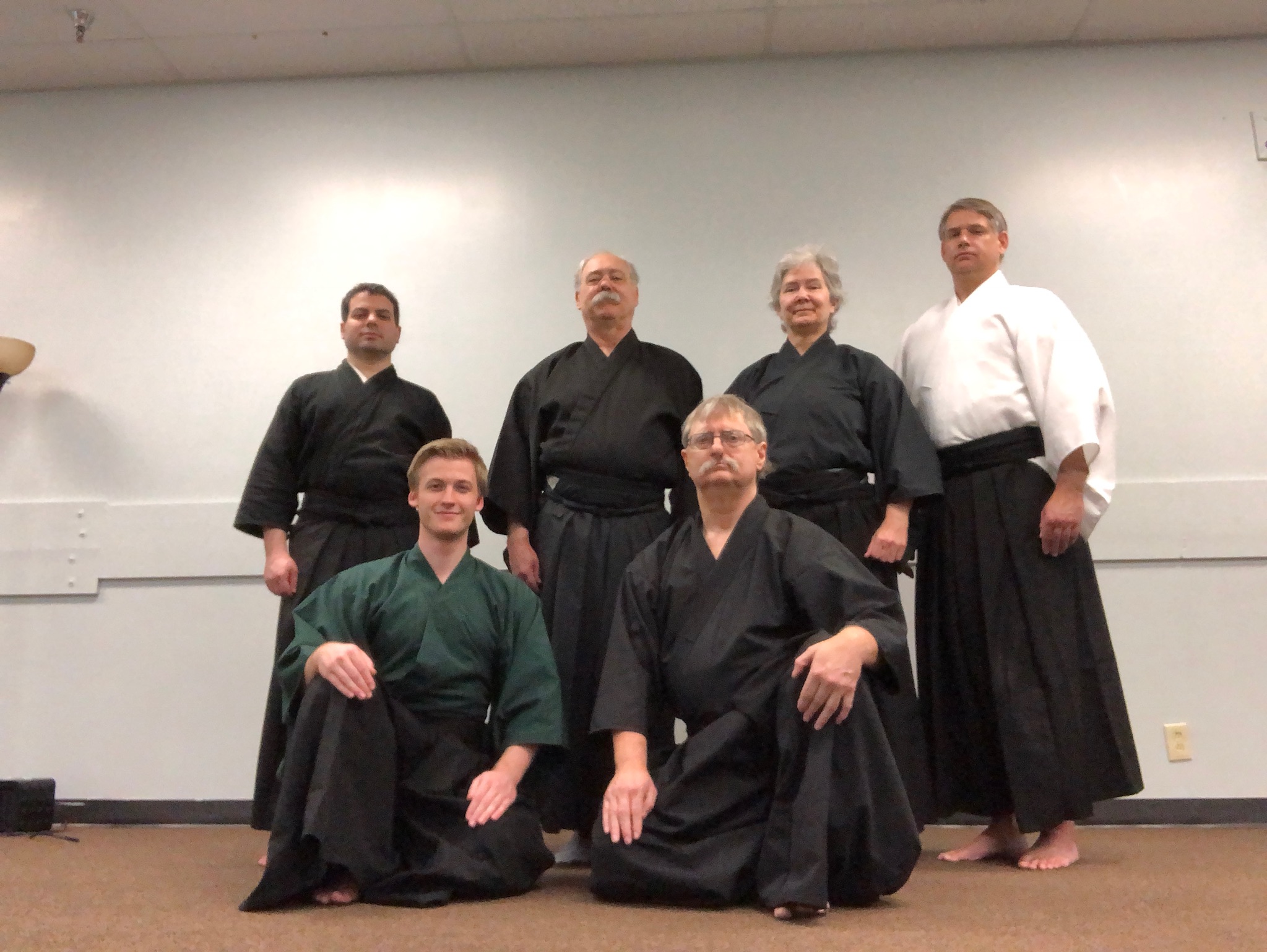
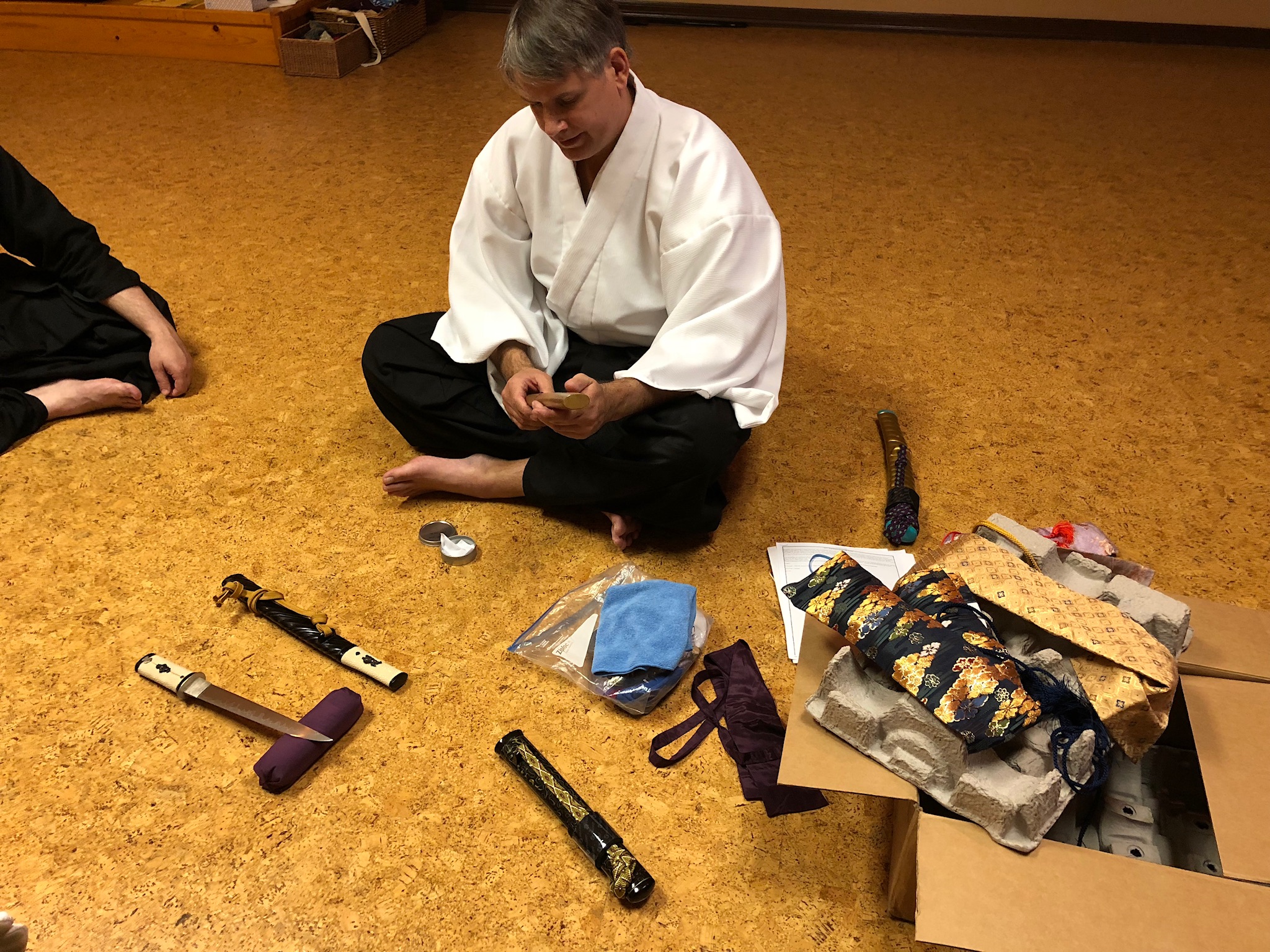
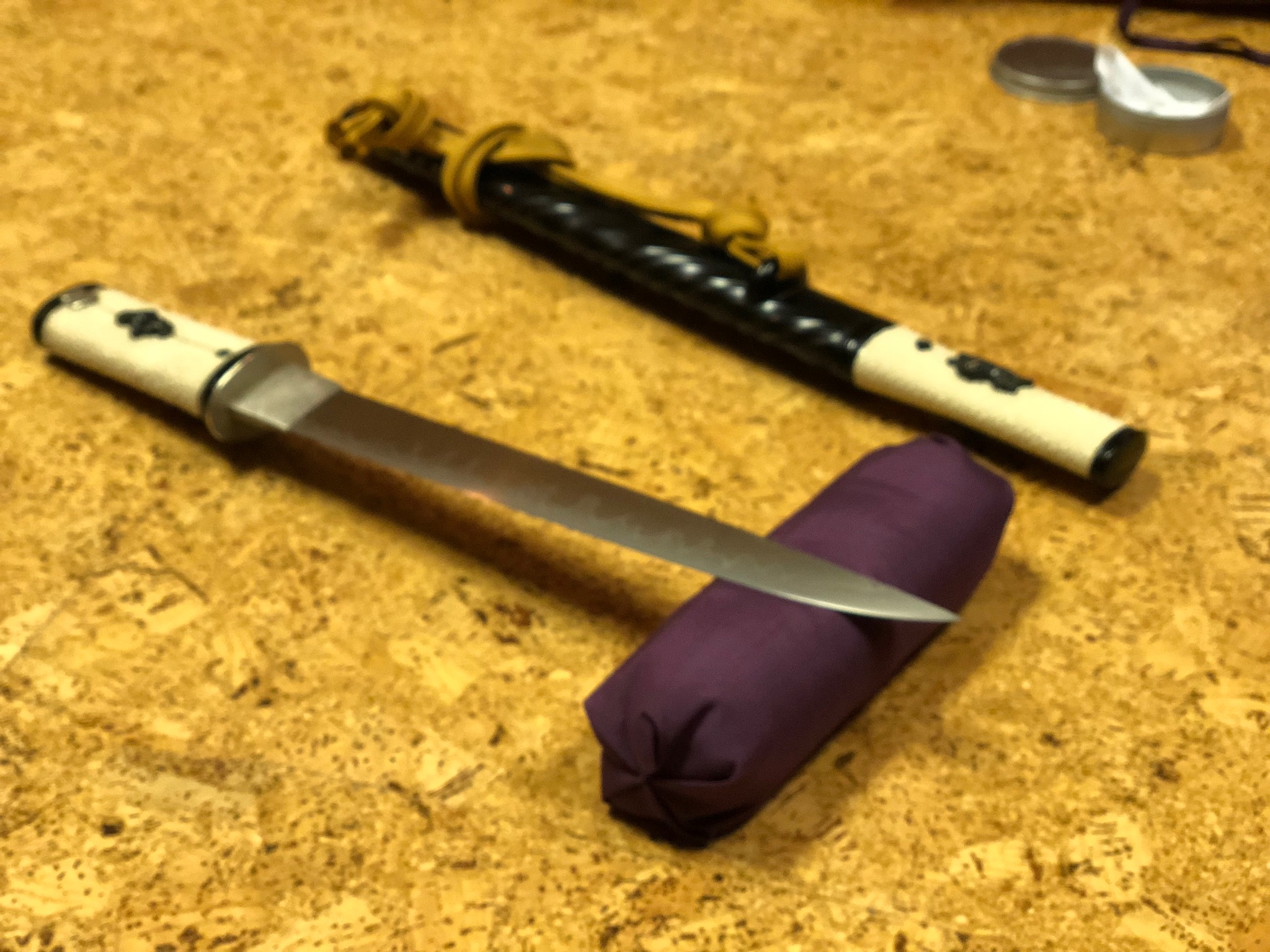
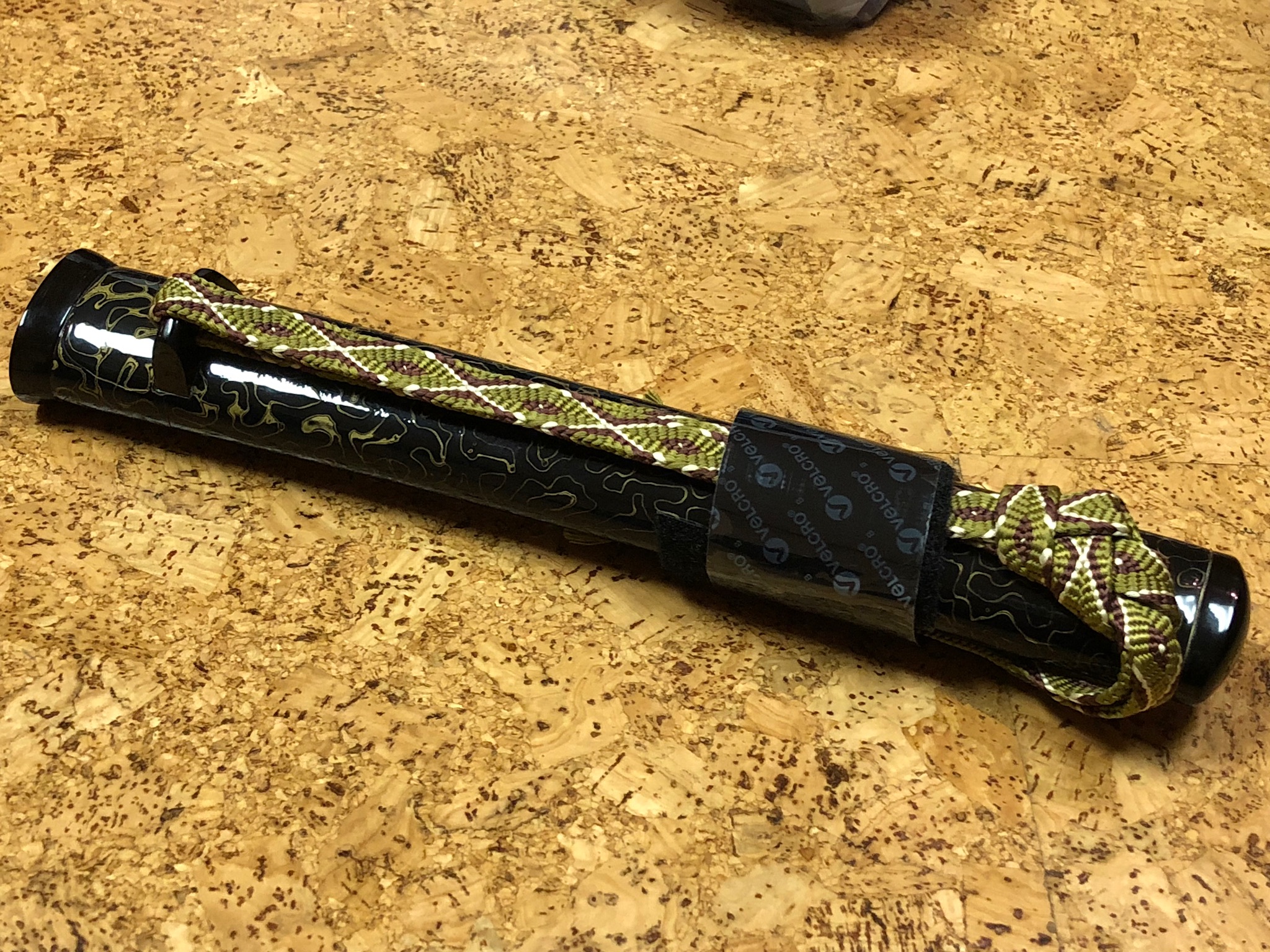
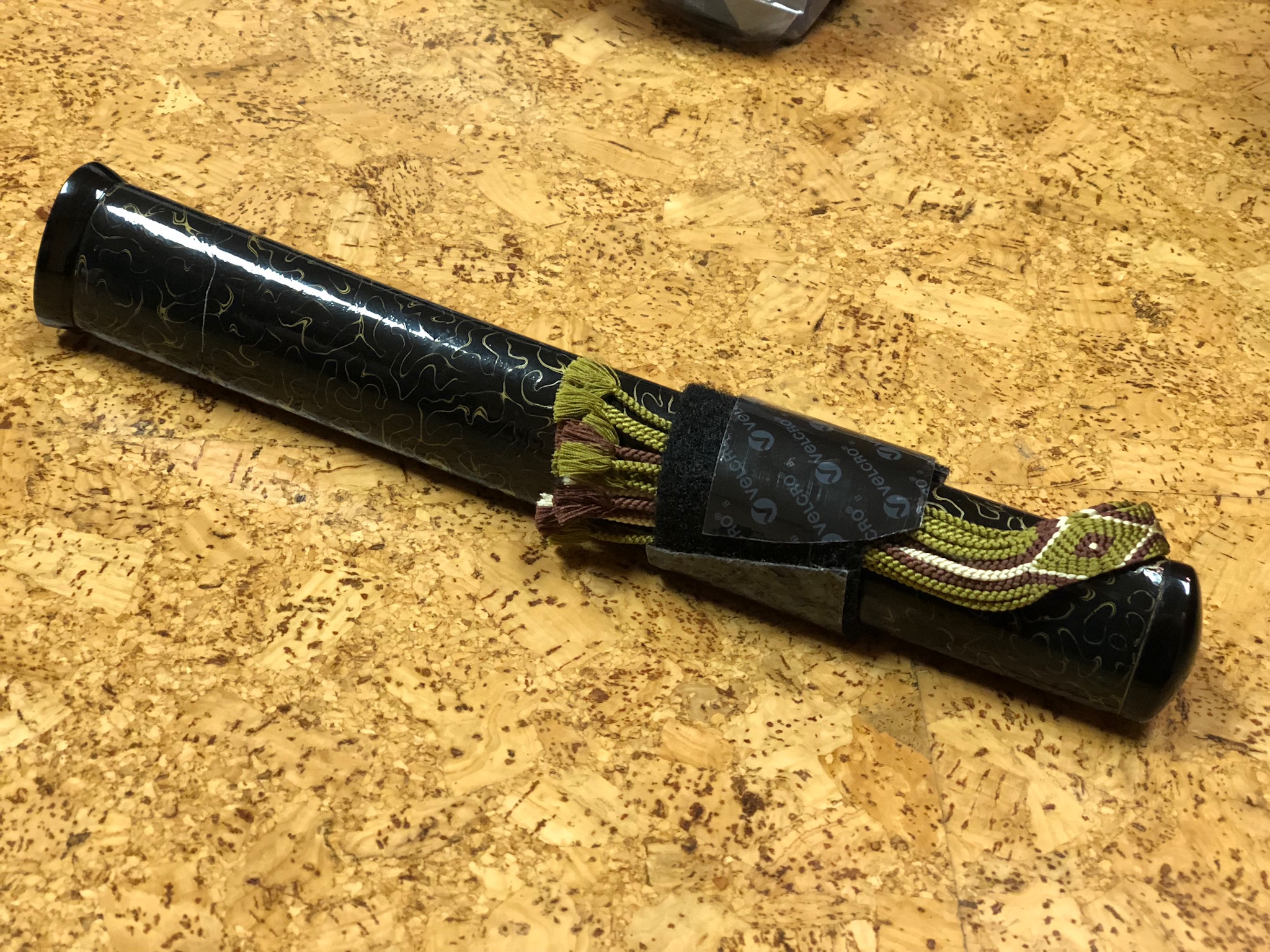
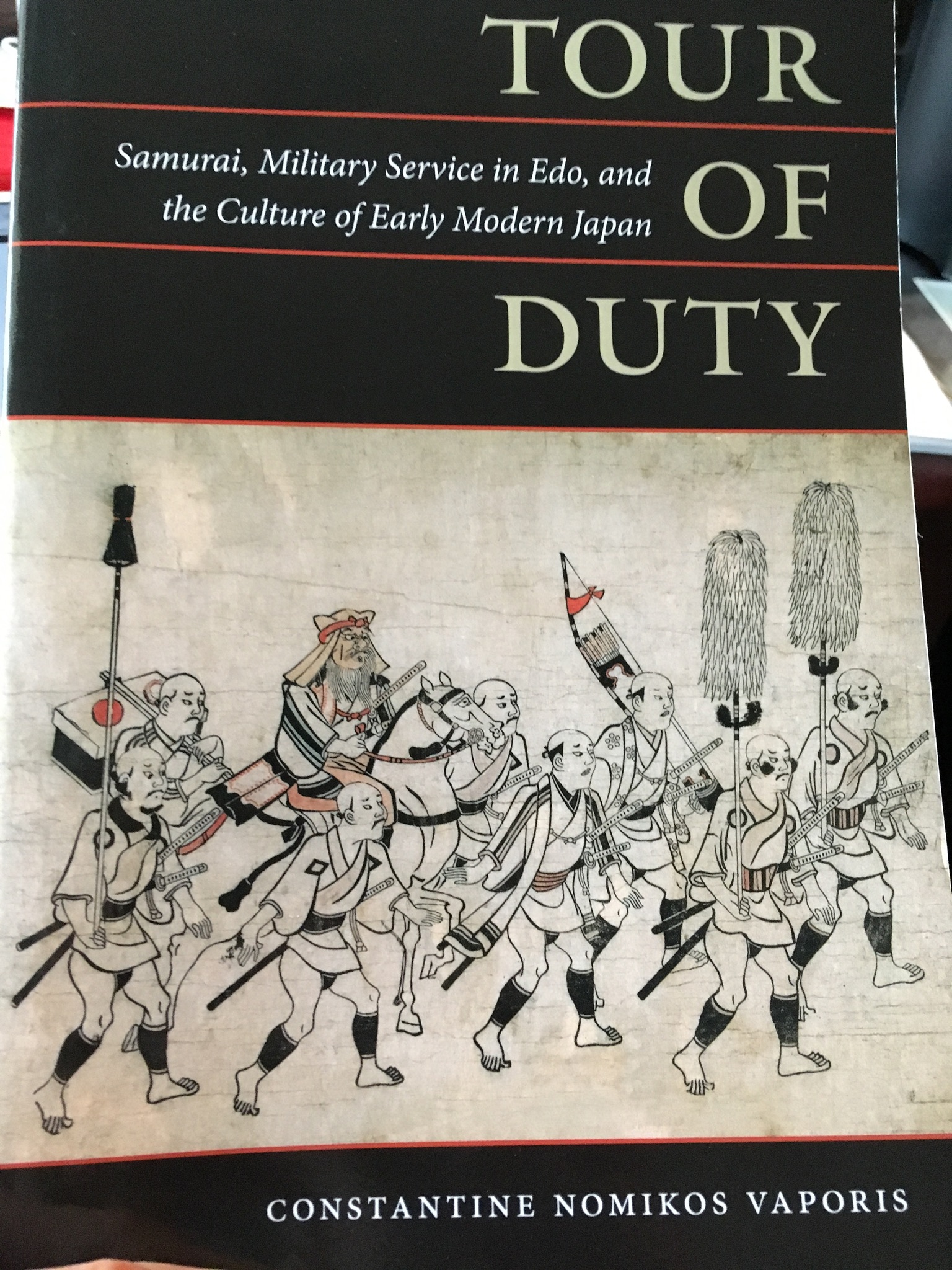 Book Review by Emily Egan
Book Review by Emily Egan
2017 Dec. 3
Tour of Duty: Samurai, Military Service in Edo, and the Culture of Early Modern Japan
By Constantine Nomikos Vaporis
2008, University of Hawai’i Press
318 pages
This book first caught my eye on the University of Hawai’i Press site (www.uhpress.hawaii.edu). It describes the institution of sankin kōtai or alternate attendance as done in the Edo era, from the overall process to the experiences of individual daimyo retainers on the road and in Edo. Of special note to MJER practitioners, a lot (but not all) of the description of process and experience is specific to Tosa domain because apparently a lot of primary material in the form of Tosa retainer diaries have been preserved. For those in MJER who do not know the history of the style, just know that from early in the Edo period, starting with the ninth headmaster (Hayashi Rokudayu Morimasa, 1661-1732) the style was passed on in Tosa domain only (later in the Meiji era Tosa became the modern Kōchi prefecture).
This excerpt from the Introduction is a nice summary of the author’s intention with this detailed work.
“However my purpose here is to put a human face on the political institution— to render alternate attendance as a lived experience. As much as extant documentation allows, I examine what the trip to and from Edo was like, what the period of enforced residence in the nation’s largest city meant to individual retainers, and how that experience effected both their personal lives and careers as well as the cultural life of the city of Edo.”
There is a LOT of information in this book, both in the main text and in the numerous notes in the back. While many of the notes are just citation of sources, some contain interesting information, so the reader is advised not to ignore the notes. The density of the information made for slow going, especially at the beginning, but towards the end where the focus is on retainers’ experiences in Edo it picks up a bit.
Before reading this book I knew about alternate attendance from reading about Japanese history, but had no understanding of what was involved in the preparation and execution of the trip, or of life in Edo as a member of a daimyo compound. This book filled in huge voids in my knowledge that I did not know were there.
Below are a few of the many things that stood out to me during my read through:
* The Yamamoto-yama tea you can buy today is part an unbroken continuation of the Edo-based shop of the same name (established about 1690). Back then the tea was a popular gift that retainers on duty in Edo would buy for their friends and family back in the domain.
* A description of a Kurume retainer going to Edo to learn a style of swordsmanship,— earning a license to teach after five years, then returning to the domain to become an instructor in the domain school.
* Buried in a note was a description of the daughter of a merchant family, employed in a daimyo compound, who was taught not just reading, writing, confucian studies, dancing and singing, but also martial arts.
* A brief mention of young women’s sumō (in Edo).
* In some domains retainers picked to accompany the lord on the trip to Edo were told to get in shape before hand. [Daimyo processions covered about 35 to 40 kilometers a day.]
* Listed in a note, the hierarchy of samurai ranks in a daimyo’s household.
* Mentioned in a note, Tosa samurai testing their new swords on a boar’s head,- then cooking & eating the head.
There were many other details worth mentioning.
Here is a link to the book description on the University of Hawai’i Press site. Also at the link are more reviews, an author bio, and a listing of the table of contents under their respective tabs.
http://www.uhpress.hawaii.edu/p-5543-9780824834708.aspx
Summary: If you’ve ever wanted to know more about alternate attendance, this, and no other, is the book for you.